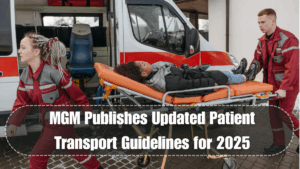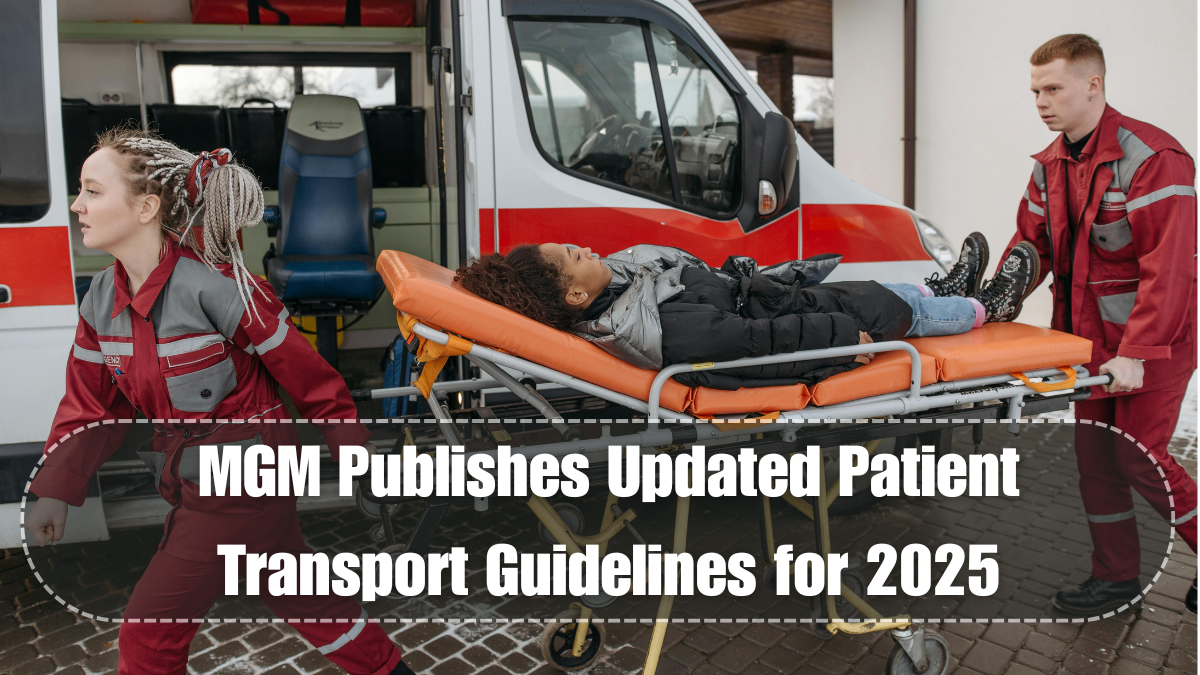In a significant development for the healthcare transport ecosystem, MGM Medical College and Hospital, Nerul has officially published a comprehensive guideline on medical transport rules India, laying down clear do’s and don’ts for patient mobility via various modes of transport. This 2025 document is now being used as a reference manual for hospital staff, ambulance operators, private drivers, and even patient families.
The updated guide includes detailed medical transport law provisions that align with India’s evolving healthcare, road safety, and insurance regulations. With patient transportation playing a vital role in emergency response, scheduled care, and inter-facility transfers, clarity on vehicle standards, escort procedures, and documentation has become more important than ever.
MGM’s 2025 vehicle guide not only addresses professional ambulance operations but also includes best practices for private vehicle use, auto-rickshaws, wheelchair vans, and even two-wheelers (where legally permitted).

What the 2025 medical transport guidelines cover
MGM’s release of updated medical transport rules India marks a decisive shift toward accountability, safety, and efficiency in hospital and non-hospital transfers. The document spans multiple categories of transport and sets protocols for each:
-
Ambulance Transport (Basic and Advanced Life Support)
Clear categorization of ALS and BLS ambulances with minimum equipment mandates, personnel qualifications, and route logs. -
Private Vehicle Transfers
Guidelines on when and how a patient can be transported in personal vehicles, especially for non-emergency hospital visits. -
Auto-Rickshaw or Taxi Transfers
Permitted only under non-critical movement with clear guidelines for driver behavior, escort responsibilities, and route limitations. -
Wheelchair Van and Special Vehicle Use
Special section on transporting physically challenged or elderly patients with care equipment and boarding assistance. -
Legal, Insurance, and Escort Rules
Documentation required during transfers, responsibilities of accompanying attendants, and insurance claim applicability.
This India 2025 version also mandates signage, consent forms, and escort identification during all hospital-to-hospital patient transfers.
Importance of the transport law update
Previously, patient mobility was often carried out informally, especially in semi-urban and suburban areas. MGM’s initiative seeks to formalize practices, reduce risk, and ensure the dignity and safety of patients in transit.
Here’s why the medical transport law update is so crucial:
| Concern | Addressed by the Guidelines |
|---|---|
| Informal transfers via unsafe vehicles | Clearly defines vehicle requirements for patient movement |
| Insurance disputes during transport | Lists paperwork needed to ensure claim eligibility |
| Safety of patients in autos/taxis | Defines escort protocols and movement restrictions |
| Inconsistent ambulance standards | Outlines ALS/BLS equipment and personnel mandates |
| Accountability of drivers and escorts | Includes ID checks and written authorization procedures |
These structured protocols bring uniformity and peace of mind to both hospital staff and families involved in the transfer process.
Role of hospital transport officers
MGM has also created a dedicated Hospital Transport Officer (HTO) role under its new vehicle guide policy. HTOs are responsible for:
-
Checking ambulance or private vehicle compliance
-
Validating driver ID, insurance, and fuel logs
-
Confirming route maps and estimated travel time
-
Ensuring the patient file and consent documents are present
-
Verifying that an approved escort is accompanying the patient
Each HTO is trained in medical transport law and operates with support from hospital administration, ensuring that every patient movement is traceable, verifiable, and safe.
Community outreach and awareness
To expand awareness of these medical transport rules India, MGM is hosting public sessions in Navi Mumbai through Resident Welfare Associations (RWAs), patient support groups, and nearby clinics. These workshops help family members understand:
-
When to request an ambulance vs private transport
-
What rights they have during hospital transfers
-
How to avoid illegal or unsafe transit operators
-
What documents they must carry during referral
The initiative has been lauded by civic officials and health NGOs as a replicable model for other institutions across India 2025.
FAQs
What are the new medical transport rules India introduced in 2025?
MGM’s guide includes detailed instructions for ambulance, auto, private vehicle, and wheelchair van-based patient transport, focusing on safety, legality, and compliance.
Can I transport a patient in my personal car?
Yes, for non-critical cases. The new vehicle guide outlines how to do so with proper escorting, documentation, and safety protocols.
Are rickshaw or taxi rides allowed for patients?
Only for stable, non-emergency cases, and when the driver and escort follow specific protocols. Critical cases must use certified ambulances.
What happens during inter-hospital ambulance transfers?
The escort must carry a signed transfer form, identity proof, and ensure the ambulance meets either BLS or ALS standards as per medical transport law.
Is insurance valid for transport done in private cars?
Only if documented correctly. The guidelines explain how to maintain a paper trail that keeps insurance eligibility intact.
Conclusion
The release of MGM Nerul’s updated medical transport rules India in 2025 sets a new gold standard for how patients are moved within and between healthcare facilities. By combining legal clarity, operational structure, and community education, these guidelines ensure that patients receive the respect, safety, and accountability they deserve throughout their medical journey. As more hospitals adopt such vehicle guide systems, India’s healthcare sector moves one step closer to safer, more professional, and tech-enabled transport protocols.
Click here to know more.




